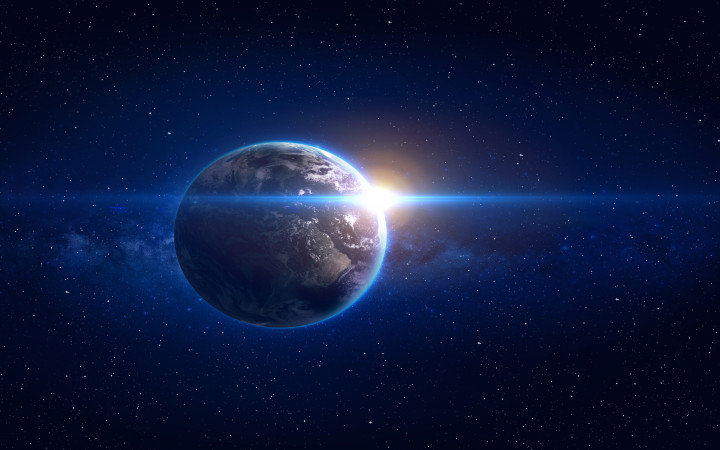Today’s Wonder of the Day was inspired by Clodagh from Sydney. Clodagh Wonders, “How does orbiting work?” Thanks for WONDERing with us, Clodagh!
Have you ever stopped to consider the sheer number of objects in our universe? There are planets, like the one we live on. There are stars, like the one our planet is constantly revolving around. And then there are countless comets, asteroids, black holes, and other celestial bodies that fill the void we call space.
You probably already know that our Earth travels around the Sun. So do all the other planets in the solar system. And most of those planets are also circled by moons, like ours. We call the path of one object moving around another an orbit. Most objects in the universe orbit around something else. Have you ever WONDERed why?
How does orbiting work? It comes down to two major concepts in science. The first is gravity. That’s the force that causes objects to move toward each other. It is driven by mass, which is the amount of matter something has. The higher an object’s mass, the stronger its gravitational force.
The second concept involved is Newton’s First Law of Motion. It states that every object will stay at rest or in motion unless acted upon by an external force. When something is moving, it will keep doing so at the same pace in the same direction unless pushed or pulled by another force—like gravity.
Take the Earth for example. Without the Sun, our rock would move at the same pace in the same direction constantly. However, the Sun has more mass than anything else in our solar system. That means its gravitational pull is very strong. The motion of the Earth combined with the Sun’s gravity work together to form our orbit. Earth’s path around the sun is not a perfect circle—it’s elliptical, meaning it’s similar to an oval.
It works the same way for every other planet in our solar system. They’re all satellites for the sun. Can you think of any non-planetary satellites? That’s right! The Moon is another satellite. It orbits the Earth.
Planets and moons are natural satellites. That means they are natural objects that orbit another natural object. You may also know that the asteroid belt also moves around the Sun. But did you know our entire solar system is also in orbit? It’s true! Our solar system is constantly orbiting the black hole at the center of the Milky Way Galaxy.
Now space also contains artificial satellites. These are objects made by humans. They are put into orbit by people. These satellites can serve a number of purposes, like learning more about distant planets.
What keeps artificial objects in orbit? It’s the same two forces that cause the orbit of planets and moons. When people launch a satellite into space, it’s programmed to travel at a specific speed. It interacts with the gravity of a larger object, like a planet. This allows the satellite to stay in orbit.
Did today’s Wonder of the Day really PULL you in? Our universe is full of interesting things to keep us curious. We’re sure glad you’re with us on this journey around the Sun!
Standards: NGSS.ESS1.A, NGSS.ESS1.B, CCRA.L.3, CCRA.L.6, CCRA.R.1, CCRA.R.2, CCRA.R.4, CCRA.R.10, CCRA.SL.1, CCRA.SL.2, CCRA.W.2, CCRA.W.4, CCRA.W.9, CCRA.L.1, CCRA.L.2




